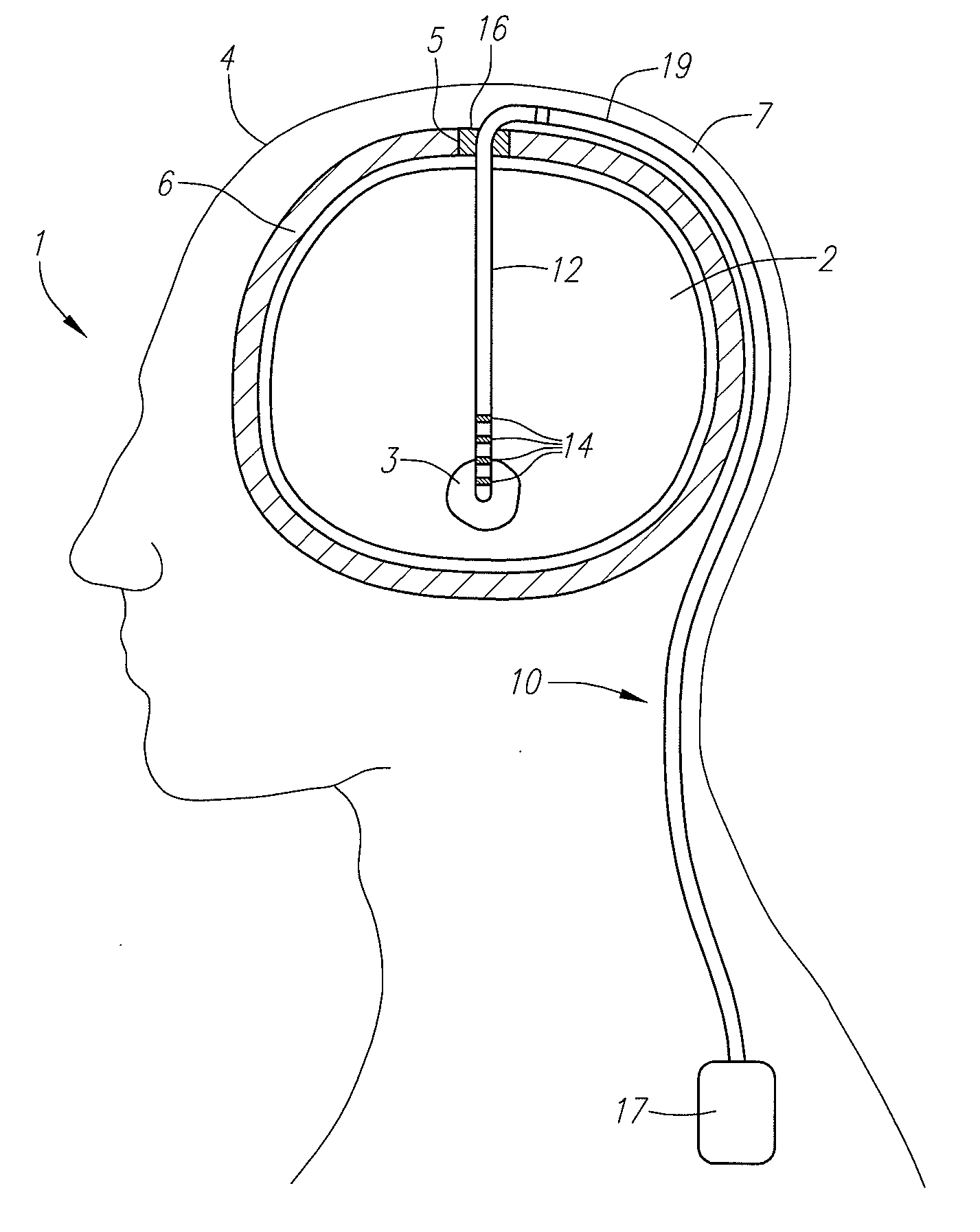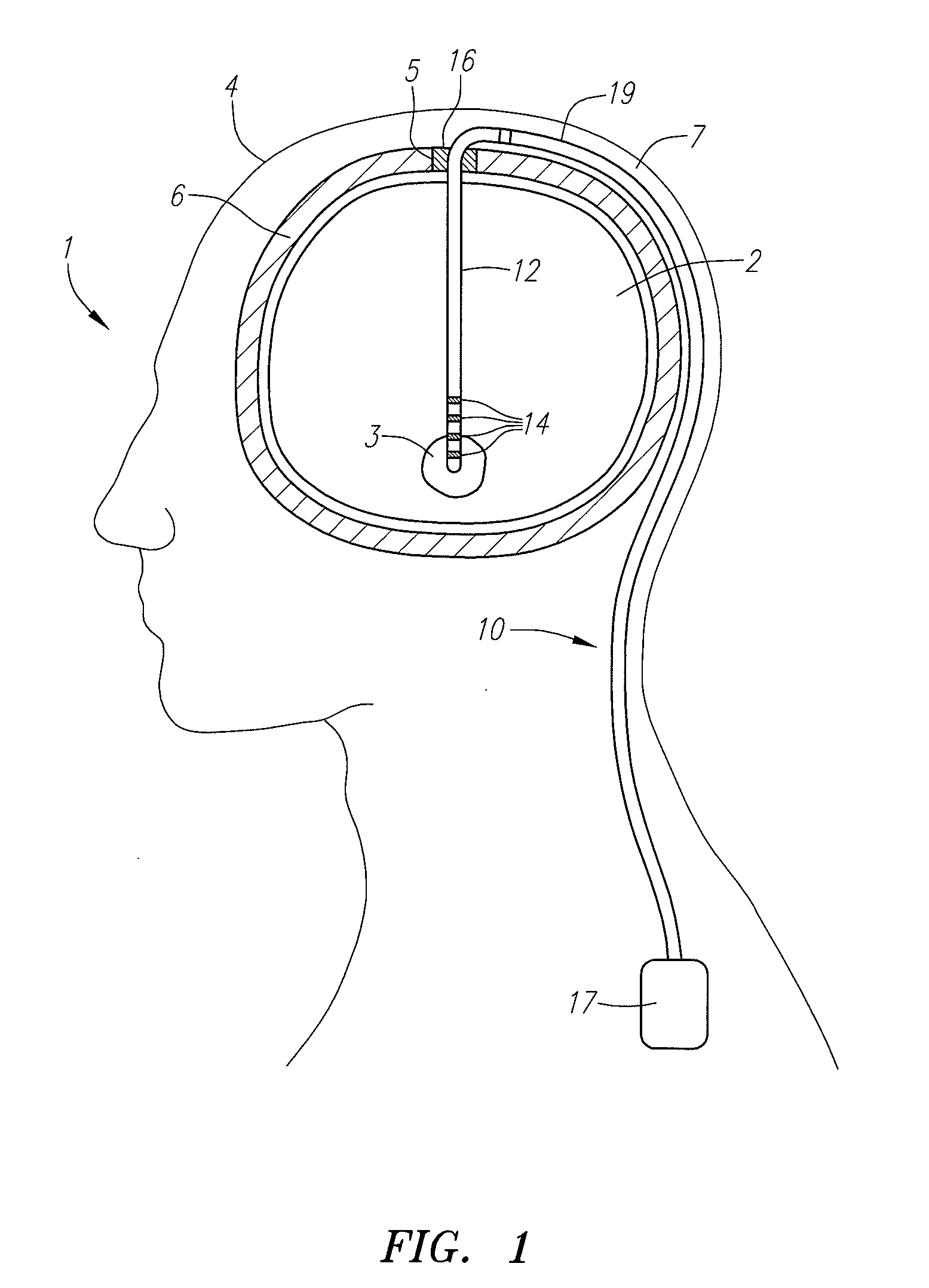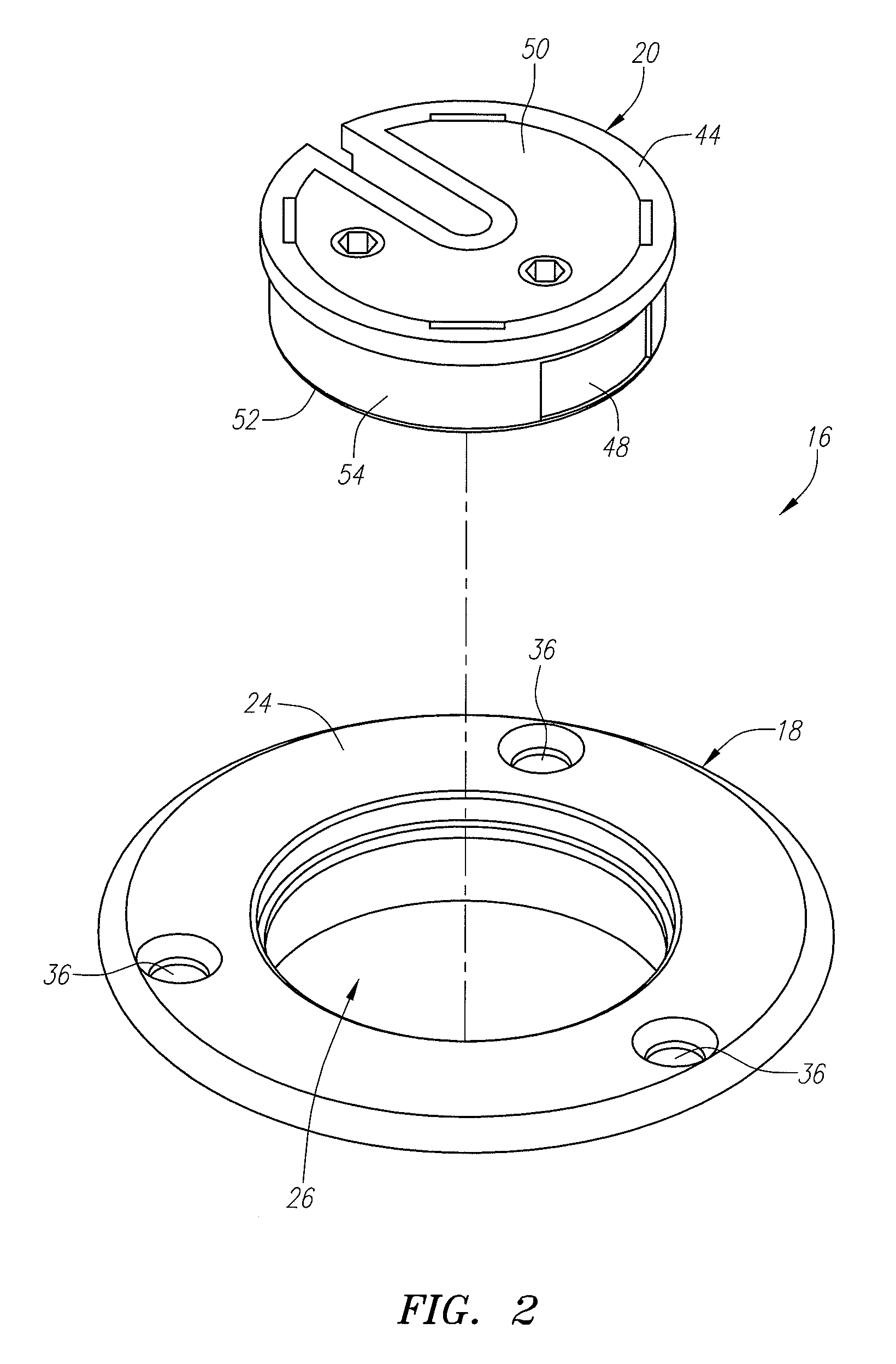Cam lock burr hole plug for securing retainer/plug base
- Summary
- Abstract
- Description
- Claims
- Application Information
AI Technical Summary
Benefits of technology
Problems solved by technology
Method used
Image
Examples
Embodiment Construction
[0080]Turning first to FIG. 1, an exemplary DBS system 10 constructed in accordance with one embodiment of the present inventions is shown implanted within a patient for the treatment of a debilitating disease such as, Parkinson's disease, dystonia, essential tremor, seizure disorders, obesity, depression, etc. The system 10 comprises a stimulation lead 12 implanted within the parenchyma of the brain 2 of a patient 1 in order to position electrodes 14 carried by the distal end of the stimulation lead 12 adjacent a target tissue region 3, such as a deep brain structure of the patient (e.g., the ventrolateral thalamus, internal segment of globus pallidus, substantia nigra pars reticulate, subthalamic nucleus, or external segment of globus pallidus). Thus, electrical stimulation energy can be conveyed from the electrodes 14 to the target tissue region 3 to treat the disease. As can be seen, the stimulation lead 12 is introduced into the head 4 of the patient 1 via a burr hole 5 formed ...
PUM
 Login to View More
Login to View More Abstract
Description
Claims
Application Information
 Login to View More
Login to View More - R&D
- Intellectual Property
- Life Sciences
- Materials
- Tech Scout
- Unparalleled Data Quality
- Higher Quality Content
- 60% Fewer Hallucinations
Browse by: Latest US Patents, China's latest patents, Technical Efficacy Thesaurus, Application Domain, Technology Topic, Popular Technical Reports.
© 2025 PatSnap. All rights reserved.Legal|Privacy policy|Modern Slavery Act Transparency Statement|Sitemap|About US| Contact US: help@patsnap.com



